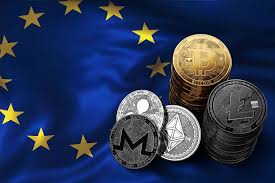On Wednesday, the United States will remove the final remaining avenue for Russia to repay billions in debt to international investors, all but ensuring that Russia defaults on its loans for the first time since the Bolshevik Revolution.
In a notification, the Treasury Department stated that it will not renew the license that permitted Russia to continue paying its debt holders through American institutions.
The Treasury Department has allowed banks permission to execute any dollar-denominated bond payments from Russia since the first round of sanctions. The deadline is midnight on May 25.
The Biden administration had previously shown signals of unwillingness to extend the deadline. Treasury Secretary Janet Yellen stated the window existed “to give a period of time for an orderly transition to take place, and for investors to be able to sell securities” at a news conference ahead of the Group of Seven finance minister meetings in Koenigswinter, Germany, last week.
“It was expected to be limited in time,” Yellen added.
Russia would be unable to repay its international bond investors if it were not allowed to use US institutions to settle its debts. The Kremlin has been paying its commitments through JPMorgan Chase and Citigroup.
Most institutional investors in Russian bonds have likely sold their positions at this point, according to Jay Auslander, a notable sovereign debt lawyer who has previously handled past debt crises such as the one in Argentina. Those who are still holding the debts are either distressed debt investors or those who are willing to wait a few years for the matter to be resolved through litigation.
“The vast majority of those who desired to leave have done so. “Finding buyers is the main challenge,” he explained.
The Kremlin appears to have anticipated that the US would not allow Russia to continue paying its debts. The Russian Finance Ministry pre-paid two bonds due this month on Friday in order to beat the May 25 deadline.
The next installment of Russia’s debt payments is due on June 23. Those bonds, like other Russian debt, have a 30-day grace period, which means Russia will be in default by late July, barring the unlikely scenario that the Russia-Ukraine war ends before then.
For months, investors have been fairly certain that Russia will default. For weeks, insurance contracts covering Russian debt have priced an 80% chance of default, and rating organizations such as Standard & Poor’s and Moody’s have rated the country’s debt as junk.
Since the 1917 Revolution, when the Russian Empire fell apart and the Soviet Union was born, Russia has never defaulted on its international loans. During the Asian Financial Crisis in the late 1990s, Russia defaulted on its internal loans but was able to recover with the support of international aid.
Because Russia has been cut off from global financial markets for months and investors have been expecting a default, a Russian default this time will likely have little impact on the world economy, according to Auslander. Officials from the Biden campaign have made similar claims.
Once it defaults, Russia is likely to go to court in the United States, the United Kingdom, or Europe to argue that it was forced into default by circumstances beyond its control — a concept known in finance as force majeure — in order to reclaim its position in global financial markets. However, winning that argument may be tough, according to Auslander, because Russia was blocked off from financial markets as a result of its invasion of Ukraine.
.

















